Why are there such high expectations for the ruling Bharatiya Janata Party in India’s ongoing parliamentary election? Simply put, the party is far better organized than its rivals, and its leader, Narendra Modi, is undeniably the most charismatic Indian prime minister in recent memory.
NEW DELHI – India, with 968 million eligible voters, is currently holding the largest exercise of democratic rights in the world. Prime Minister Narendra Modi’s ruling Bharatiya Janata Party (BJP) – the world’s largest political party – is widely expected to win.
The BJP has come to dominate India’s electoral landscape for several reasons: it focused relentlessly on building its organizational strength, promoted meritocracy within its ranks, widened its voter base, and competently delivered benefits to the poor.
Socially conservative but economically centrist, the BJP was formally established in 1980, though its roots lie in the Bharatiya Jana Sangh, a party that emerged in the 1950s to offer a Hindu nationalistic, laissez-faire alternative to that era’s prevailing socialist mindset. The BJP has been in power for about 19 of the 77 years since Indian independence: three years from 1977, 13 days in 1996, one year in 1998, five years from 1999, and ten years since 2014. Thus, it has retained the DNA of a challenger, despite winning 303 of the Lok Sabha’s 543 seats in the 2019 elections, when the Indian National Congress, the second-largest party, won only 52.
After making a dent in parliament in the late 1960s, the BJP formed the first-ever non-Congress government in the late 1970s, following Indira Gandhi’s suspension of civil liberties. Owing to broad sociological developments in the late 1980s, regional caste-based parties started gaining ground. With Congress having jeopardized its standing by repeatedly adopting erratic political positions, the BJP’s religious messaging helped it unite Hindu society, resulting in the first non-Congress government ever to last a full term.
The past decade saw a similar pattern. In 2014, the vacuum created by complacency within Congress and succession-related challenges in regional parties enabled the BJP to become the first party to win an outright majority in the Lok Sabha since 1984. Thereafter, it gradually built a near-hegemonic position.
In a country dominated by political dynasties, the BJP stands out for its commitment to meritocracy. In this year’s parliamentary election cycle, it replaced roughly one-quarter of its current MPs with new candidates, demonstrating both a detailed knowledge of electoral dynamics and a capacity for tough decision-making. This regular churn keeps everyone on their toes and protects the party against capture by narrow groups.
While the BJP was primarily supported by upper-middle-class, urban, privileged Hindus 30 years ago, it has since built a broader political base. In 2019, it won 37.6% of the rural vote, 32.9% of the semi-rural vote, 36% of the lower-income vote, and 33-48% of the vote from various lower castes. Those results reflect the groundwork laid by the party’s ideological parent, the Rashtriya Swayamsevak Sangh, an organization founded in 1925 to advance a vision of India as a “Hindu nation,” and which combines a volunteer paramilitary wing with grassroots economic rehabilitation and social work.
Yet, despite its explicitly Hindu-nationalist agenda and muzzling of the Muslim community, the BJP has also increased its share of the vote among religious minorities. While only 4% of Muslims voted for it in 2009, that figure rose to 9% in 2014, and to 19% in 2019, compared to 30% for Congress that year, with the rest going to fragmented regional parties.
India’s direct benefits program is by far the most tangible source of the BJP’s mass appeal. In 2023, the government distributed $60 billion to more than 900 million beneficiaries, through 4.9 billion transactions involving 315 government schemes and 54 ministries. That is a marked change from 40 years ago, when Prime Minister Rajiv Gandhi complained that only 15% of Indian government spending on welfare programs reached the intended beneficiaries.
Few commentators appreciate the conscious efforts that BJP leaders make to stay abreast of developments on the ground. In 2014, the party instituted its Sahyog policy, whereby a rotation of serving ministers make themselves available at party headquarters, so that staffers can engage with them directly. Some 200 people participate in these meetings every day, offering direct feedback and eliminating distortions that arise from multiple organizational layers.
The BJP also offers a strong aspirational narrative. Modi’s government has fostered a can-do spirit with widespread infrastructure investments that include the construction of 75 new airports in the last decade, last year’s G20 summit which was showcased across India, and a $5 trillion GDP target. India is now far more prominent on the world stage; this has captured the national imagination.
The BJP’s campaign operation leaves no stone unturned. Canvassers are assigned lists of individual voters to target, convert, and mobilize. In each district, 18-20 media vans blare out the party’s message, even in small villages of only 2,000 people. The party’s “know your customer” database would put many multinational companies to shame.
Modi amplifies the BJP’s strengths. He is the most charismatic prime minister in recent memory, and he has a firm grip on the issues. These attributes have made him one of the world’s most popular leaders, with an approval rating of 78%, according to Morning Consult. Parliamentary seats are won in his name. In the 2019 election, members who switched from rival parties to the BJP won 56.52% of the time, compared to 14.9% for those who switched to other parties.
Many of the BJP’s strengths are also sources of criticism: its nationalist ideology gives it blind spots, its challenger mentality has rough edges, Modi’s popularity can lead to hubris, and its cadres can become a source of organizational rigidity. The BJP will need to guard against the pathologies of incumbency, lest it starts looking like Congress, once a great political party whose relevance is currently being questioned by many. As the BJP thinks about its legacy, it should internalize an old Indian proverb: “Forts decay from the inside.”
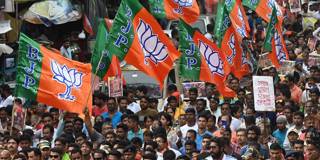

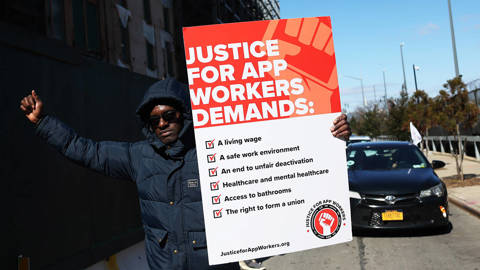
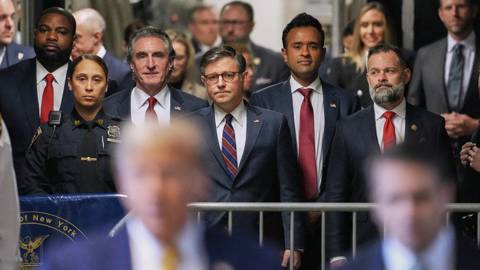
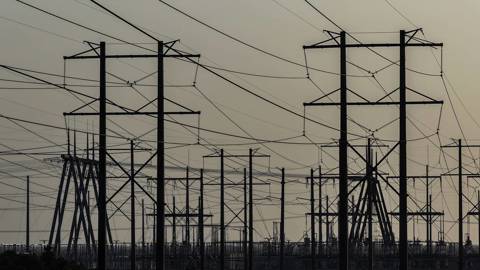


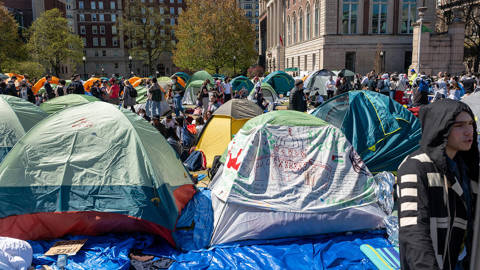
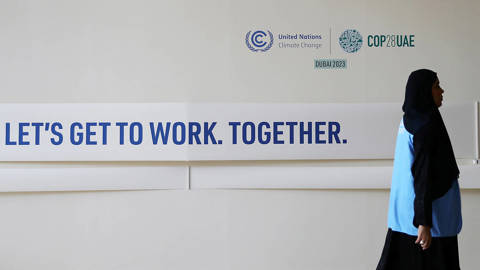


NEW DELHI – India, with 968 million eligible voters, is currently holding the largest exercise of democratic rights in the world. Prime Minister Narendra Modi’s ruling Bharatiya Janata Party (BJP) – the world’s largest political party – is widely expected to win.
The BJP has come to dominate India’s electoral landscape for several reasons: it focused relentlessly on building its organizational strength, promoted meritocracy within its ranks, widened its voter base, and competently delivered benefits to the poor.
Socially conservative but economically centrist, the BJP was formally established in 1980, though its roots lie in the Bharatiya Jana Sangh, a party that emerged in the 1950s to offer a Hindu nationalistic, laissez-faire alternative to that era’s prevailing socialist mindset. The BJP has been in power for about 19 of the 77 years since Indian independence: three years from 1977, 13 days in 1996, one year in 1998, five years from 1999, and ten years since 2014. Thus, it has retained the DNA of a challenger, despite winning 303 of the Lok Sabha’s 543 seats in the 2019 elections, when the Indian National Congress, the second-largest party, won only 52.
After making a dent in parliament in the late 1960s, the BJP formed the first-ever non-Congress government in the late 1970s, following Indira Gandhi’s suspension of civil liberties. Owing to broad sociological developments in the late 1980s, regional caste-based parties started gaining ground. With Congress having jeopardized its standing by repeatedly adopting erratic political positions, the BJP’s religious messaging helped it unite Hindu society, resulting in the first non-Congress government ever to last a full term.
The past decade saw a similar pattern. In 2014, the vacuum created by complacency within Congress and succession-related challenges in regional parties enabled the BJP to become the first party to win an outright majority in the Lok Sabha since 1984. Thereafter, it gradually built a near-hegemonic position.
In a country dominated by political dynasties, the BJP stands out for its commitment to meritocracy. In this year’s parliamentary election cycle, it replaced roughly one-quarter of its current MPs with new candidates, demonstrating both a detailed knowledge of electoral dynamics and a capacity for tough decision-making. This regular churn keeps everyone on their toes and protects the party against capture by narrow groups.
SPRING SALE: Save 40% on all new Digital or Digital Plus subscriptions
Subscribe now to gain greater access to Project Syndicate – including every commentary and our entire On Point suite of subscriber-exclusive content – starting at just $49.99.
Subscribe Now
While the BJP was primarily supported by upper-middle-class, urban, privileged Hindus 30 years ago, it has since built a broader political base. In 2019, it won 37.6% of the rural vote, 32.9% of the semi-rural vote, 36% of the lower-income vote, and 33-48% of the vote from various lower castes. Those results reflect the groundwork laid by the party’s ideological parent, the Rashtriya Swayamsevak Sangh, an organization founded in 1925 to advance a vision of India as a “Hindu nation,” and which combines a volunteer paramilitary wing with grassroots economic rehabilitation and social work.
Yet, despite its explicitly Hindu-nationalist agenda and muzzling of the Muslim community, the BJP has also increased its share of the vote among religious minorities. While only 4% of Muslims voted for it in 2009, that figure rose to 9% in 2014, and to 19% in 2019, compared to 30% for Congress that year, with the rest going to fragmented regional parties.
India’s direct benefits program is by far the most tangible source of the BJP’s mass appeal. In 2023, the government distributed $60 billion to more than 900 million beneficiaries, through 4.9 billion transactions involving 315 government schemes and 54 ministries. That is a marked change from 40 years ago, when Prime Minister Rajiv Gandhi complained that only 15% of Indian government spending on welfare programs reached the intended beneficiaries.
Few commentators appreciate the conscious efforts that BJP leaders make to stay abreast of developments on the ground. In 2014, the party instituted its Sahyog policy, whereby a rotation of serving ministers make themselves available at party headquarters, so that staffers can engage with them directly. Some 200 people participate in these meetings every day, offering direct feedback and eliminating distortions that arise from multiple organizational layers.
The BJP also offers a strong aspirational narrative. Modi’s government has fostered a can-do spirit with widespread infrastructure investments that include the construction of 75 new airports in the last decade, last year’s G20 summit which was showcased across India, and a $5 trillion GDP target. India is now far more prominent on the world stage; this has captured the national imagination.
The BJP’s campaign operation leaves no stone unturned. Canvassers are assigned lists of individual voters to target, convert, and mobilize. In each district, 18-20 media vans blare out the party’s message, even in small villages of only 2,000 people. The party’s “know your customer” database would put many multinational companies to shame.
Modi amplifies the BJP’s strengths. He is the most charismatic prime minister in recent memory, and he has a firm grip on the issues. These attributes have made him one of the world’s most popular leaders, with an approval rating of 78%, according to Morning Consult. Parliamentary seats are won in his name. In the 2019 election, members who switched from rival parties to the BJP won 56.52% of the time, compared to 14.9% for those who switched to other parties.
Many of the BJP’s strengths are also sources of criticism: its nationalist ideology gives it blind spots, its challenger mentality has rough edges, Modi’s popularity can lead to hubris, and its cadres can become a source of organizational rigidity. The BJP will need to guard against the pathologies of incumbency, lest it starts looking like Congress, once a great political party whose relevance is currently being questioned by many. As the BJP thinks about its legacy, it should internalize an old Indian proverb: “Forts decay from the inside.”